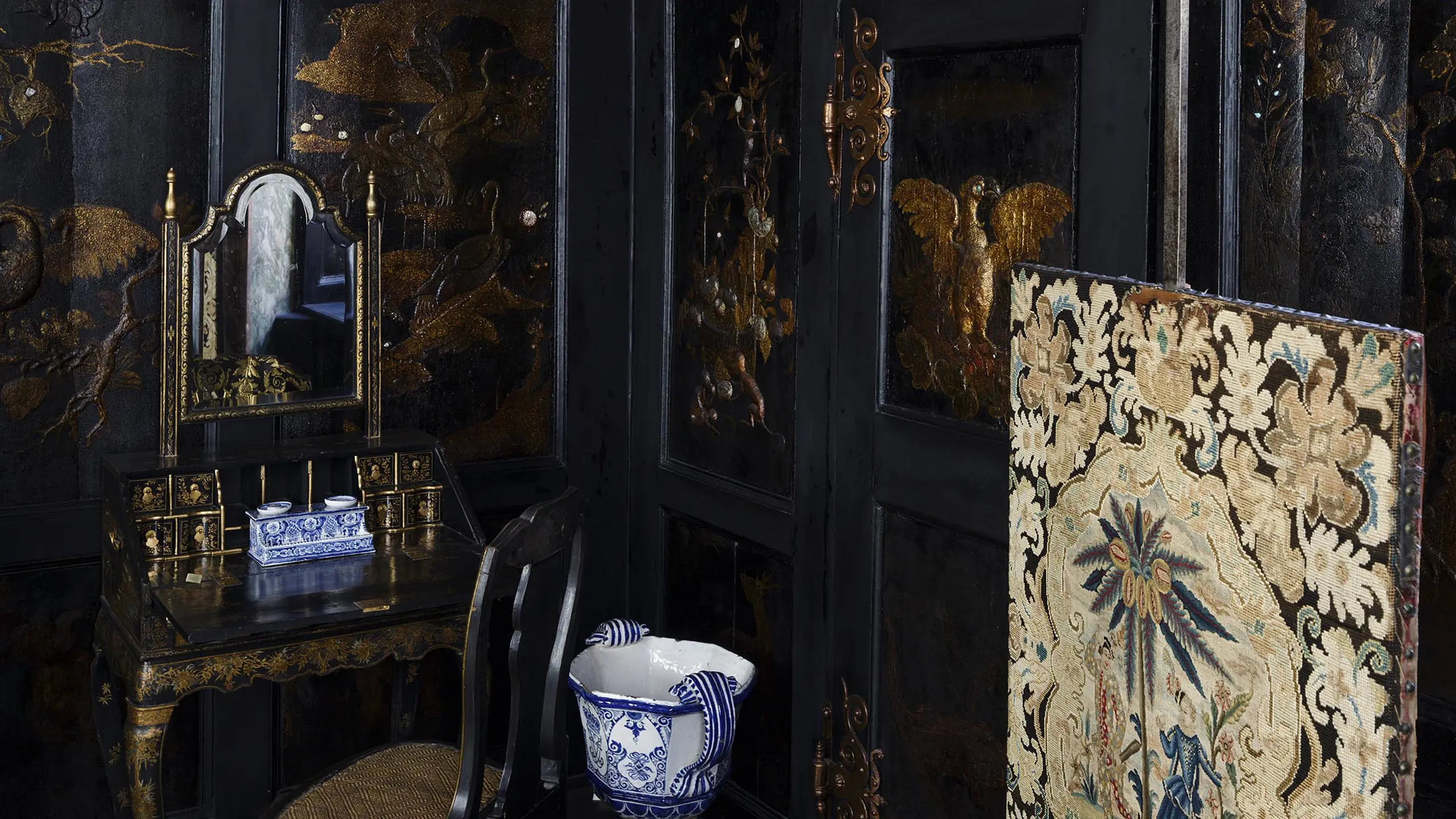The Princess’ Chamber (room 9)
Christian IV, Frederik III, Frederik IV, and Frederik IV's sister, Princess Sophie Hedevig, have all frequented this beautiful cabinet, which has served many different functions over time.

From audiences to royal cabinet
Back when Rosenborg Castle was first completed and Christian IV moved in during the summer months, this room was called Christian IV's Golden Chamber. It was named so because the room was decorated with flowers on gilded wooden panels. Christian IV used the room for private conversations with guests during official receptions in the adjacent audience chamber.
After Christian IV's death, his son, Frederik III, used the chamber for informal audiences. Between 1663 and 1665, he had the room decorated with so-called chinoiseries – Chinese/Asian decorations in lacquer with turquoise and mother-of-pearl inlays. The Dutchman Francis de Bray was responsible for this work, using illustrated Chinese travel descriptions, novels, and Japanese lacquer boxes and crafts for inspiration.
The chamber was restored in 1716 and then served as a cabinet – a smaller, private room in a prestigious building or castle – for Frederik IV's sister, Princess Sophie Hedevig, when she stayed in Copenhagen.
The beautiful chandelier in the ceiling has a very special history. Besides being presumably French, it was rescued from the pleasure palace Sophie Amalienborg, which burned down in 1689. Sophie Amalienborg was a magnificent castle located where Amalienborg stands today. It was built by Frederik III's Queen Sophie Amalie, who had the castle constructed and subsequently named it after herself. Unfortunately, Sophie Amalienborg burned down to the ground on April 19, 1689, just 16 years after it was built. The current Amalienborg is named after this first castle.
Objects in the room
If you are physically at the museum, you can admire the outstanding objects and read more about them below.
Please note that these descriptions are brief and often without images. They serve as an additional resource for those who wish to gain more knowledge about each object, such as who created them, their origin, and significance.